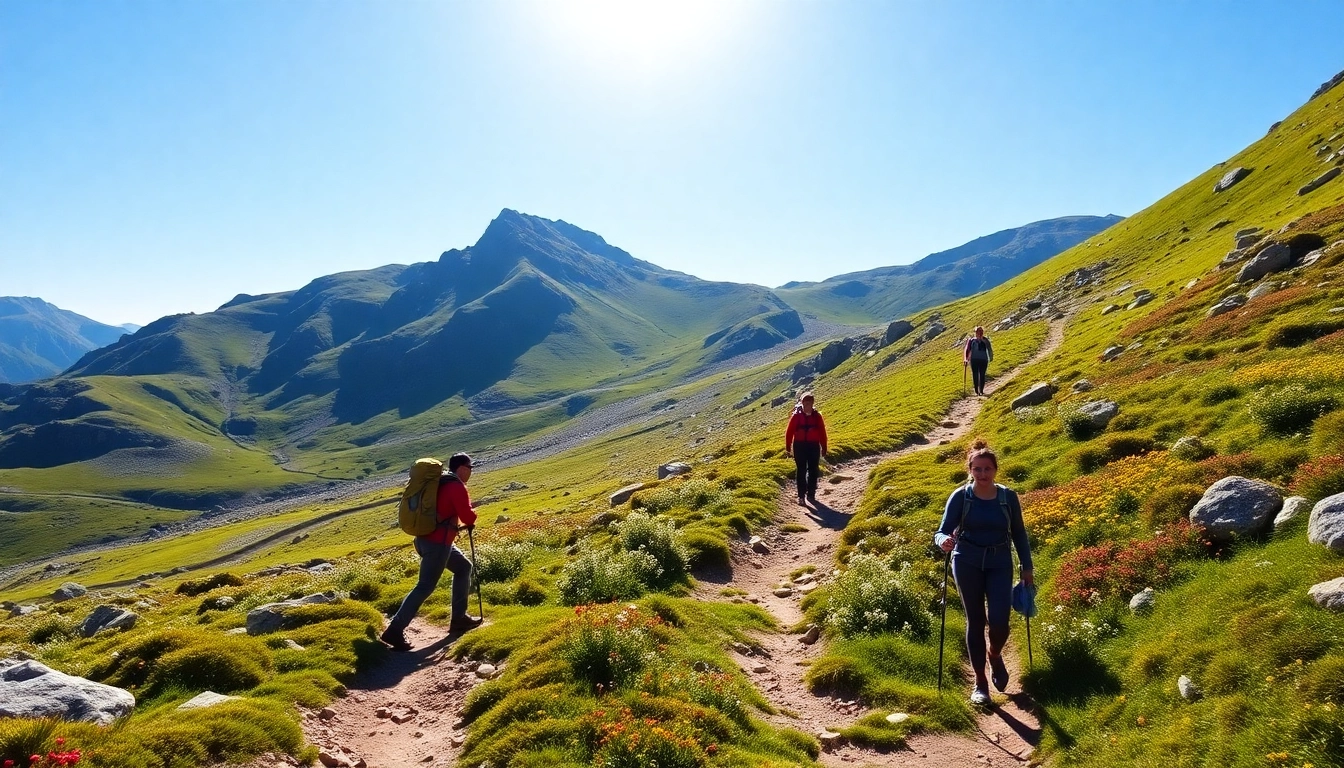Understanding What a Hike Truly Involves
The term hike evokes images of long, invigorating walks through pristine natural landscapes, offering an escape from urban life and an opportunity to reconnect with nature. While many perceive hiking as merely walking on trails, it encompasses a wide range of activities, terrains, and cultural significances that enrich the outdoor experience. Delving into the definition and different types of hikes helps enthusiasts and beginners alike appreciate the depth of this adventure sport and recreational pursuit.
Definition and Types of Hikes
At its core, a hike is a long, vigorous walk, typically in natural environments such as forests, mountains, hills, or countryside. According to Merriam-Webster, it involves traveling on foot over extended distances, often for pleasure, exercise, or exploration. The activity’s purpose can range from leisurely strolls to challenging expeditions demanding physical endurance.
Various types of hikes exist, mainly classified based on their difficulty, terrain, and purpose:
- Leisure Hikes: Short, easy walks suitable for all ages, often on well-maintained trails or park pathways. Ideal for families or beginners seeking relaxation and scenic views.
- Nature Walks: Focused on observing wildlife, flora, and landscape features, often with educational components or guided tours.
- Backpacking or Multi-Day Hikes: Extended journeys covering multiple days with overnight camping, requiring significant planning, gear, and endurance.
- Trail Running: A more intense variation combining running and hiking, often on rugged terrains, appealing to fitness enthusiasts.
- Trekking and Adventure Hikes: Challenging and remote hikes involving steep inclines, glaciers, or difficult terrains that require specialized skills and equipment.
History and Cultural Significance of Hiking
Hiking’s history traces back centuries, rooted in human exploration, spiritual practices, and cultural traditions. In Europe, walking for pleasure gained popularity during the eighteenth century as part of the Romantic Movement, emphasizing a connection to nature and individual introspection. Such activities served as both leisure and spiritual pursuits, fostering cultural independence and appreciation for scenic landscapes.
Indigenous communities worldwide have long engaged in walking and trekking as part of their daily routines, ceremonial journeys, or trade routes. Modern hiking rediscovered these ancient paths, transforming them into recreational and eco-tourism attractions. Notably, regions like the Appalachian Trail in the United States or the Camino de Santiago in Spain embody cultural heritage woven into outdoor adventures, blending physical activity with historical exploration.
Today, hiking is seen not only as an individual activity but also as a tool for environmental awareness, outdoor education, and community building, contributing significantly to the culture of outdoor sports and conservation efforts.
Different Terrain Challenges in Hiking
Navigation through diverse terrains is a core aspect that defines hiking difficulty and experience. Common terrain challenges include:
- Steep Inclines and Declines: Require strength, balance, and endurance, especially on mountain trails.
- Rocky and Uneven Surfaces: Demand careful foot placement and good footwear to prevent injuries.
- Mud and Wet Conditions: Can cause slips and require adaptive techniques and waterproof gear.
- Snow and Ice: Elevate risks of frostbite and slips, often necessitating crampons or snowshoes.
- Dense Forest and Overgrown Trails: Obstruct visibility and navigation, demanding orienteering skills.
Each terrain type challenges the hiker’s physical and mental resilience, making preparation and proper equipment essential for safety and enjoyment.
Preparing for Your First or Next Hike
Gear and Equipment for a Safe Hike
Proper preparation begins with selecting the right gear. Essential equipment includes:
- Footwear: Durable, comfortable hiking boots with good ankle support and traction are vital. Choose footwear suited for the terrain and weather conditions.
- Clothing: Layered clothing allows regulation of body temperature. Opt for moisture-wicking base layers, insulating mid-layers, and waterproof outer shells.
- Backpack: A well-fitted pack should carry essentials without causing strain. Look for ergonomic designs with multiple compartments.
- Navigational Tools: Topographic maps, compass, or GPS devices help prevent getting lost, especially on unfamiliar trails.
- Lighting: Headlamps or flashlights are necessary for early morning or evening hikes.
- Safety Items: First aid kit, multi-tool, whistle, and emergency blanket support safety in unforeseen situations.
- Hydration and Nutrition: Reusable water bottles or hydration packs, along with energy bars or snacks, maintain energy levels.
Choosing the Right Trail Based on Skill Level
Selecting an appropriate trail ensures a rewarding experience. Novice hikers should opt for well-marked, flat, and shorter routes, such as local park trails or beginner paths. Experienced adventurers can challenge themselves with longer, steeper, or remote trails that require advanced navigation skills and specialized equipment.
Resources like hiking guides, online trail reviews, and local park information aid in matching your skills and fitness level with suitable routes. It’s crucial to respect your physical limits to prevent injuries and ensure safety.
Planning Your Route and Checking Weather Conditions
Effective planning includes detailed map study, understanding trail length, elevation, water sources, and potential hazards. Checking weather forecasts days prior and just before the hike is essential, as conditions can change rapidly, especially in mountainous regions.
Be prepared to alter or postpone plans in case of adverse weather, and always inform someone about your route and expected return time. Apps and websites providing real-time weather updates and trail conditions are valuable tools.
Best Practices for an Enjoyable Hike
Leave No Trace Principles
Respect for nature is fundamental to sustainable hiking. The Leave No Trace (LNT) principles guide outdoor enthusiasts to minimize their impact:
- Plan ahead and prepare: Know the trail and pack appropriate gear to avoid unnecessary disturbances.
- Travel and camp on durable surfaces: Stick to established trails and camping sites to protect vegetation.
- Dispose of waste properly: Pack out all trash, leftover food, and waste materials.
- Leave what you find: Preserve natural and cultural features for future hikers.
- Respect wildlife: Observe animals from a distance and do not feed or disturb them.
- Be considerate of other visitors: Keep noise levels low and yield the trail when necessary.
Hydration and Nutrition Tips
Staying hydrated and nourished is pivotal for maintaining energy and focus. Tips include:
- Drink water regularly, even before feeling thirsty.
- Incorporate electrolyte drinks for extended hikes.
- Pack energy-dense snacks like nuts, dried fruits, and energy bars for quick nourishment.
- Avoid heavy or perishable food that can spoil or cause discomfort.
Safety Tips for Hikers in Remote Areas
Remote hiking demands heightened awareness and preparation:
- Carry a fully charged communication device with emergency contacts.
- Inform someone trustworthy about your itinerary and expected return.
- Know basic first aid and carry a compact first aid kit.
- Avoid overexertion; take regular breaks and monitor weather alerts.
- Learn emergency evacuation procedures for the area.
Optimizing Your Hiking Experience
Integrating Technology and Apps for Navigation
Modern technology enhances safety and convenience. GPS navigation apps like AllTrails, Gaia GPS, or Komoot offer detailed trail maps, elevation profiles, and user reviews. Utilizing offline maps is recommended where cellular connectivity is unreliable. Heart rate monitors and fitness trackers help track your progress and physical exertion, making the hiking more engaging and measurable.
Engaging with Local Hiking Communities
Joining local hiking clubs or online groups facilitates knowledge sharing, safety tips, and social interactions. Many communities host guided hikes, trail maintenance events, and educational workshops, enriching your outdoor experience while fostering stewardship and camaraderie.
Tracking Progress and Setting Goals
Establishing personal goals, such as completing a specific trail or improving endurance, adds motivation. Use apps to log hikes, monitor distance and elevation, and celebrate milestones. Tracking your progress also aids in adjusting training plans and ensuring steady development.
Advanced Hiking Skills and Challenges
Navigation and Map Reading Skills
Mastery of map reading, compass use, and GPS devices is critical, especially on unmarked or remote trails. Practice orienteering techniques, understanding topographic symbols, and reading terrain features allow hikers to navigate confidently.
Dealing with Unpredictable Weather
Weather can change swiftly, posing risks like hypothermia, heat exhaustion, or storms. Equip yourself with weather-appropriate gear, and learn to interpret weather signs such as cloud formations or wind patterns. Have contingency plans for shelter and evacuation.
Long-Distance and Multi-Day Hikes Planning
Successful multi-day hikes require meticulous planning—selecting suitable routes, arranging permits, reserving campsites, and packing lightweight yet comprehensive gear. Prioritize safety, nutrition, and hydration, and prepare for varying trail conditions and elevation changes. Practice camp cooking and establish pacing strategies for endurance.



